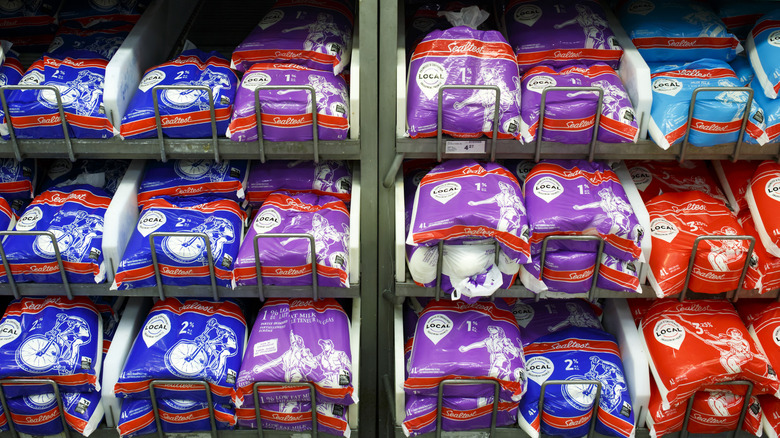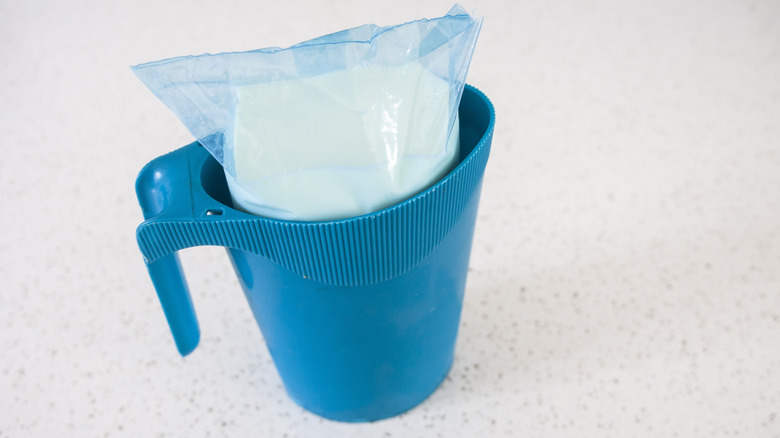Why Buying A Gallon Of Milk Looks Different In Canada
While Canada is best known for its famous poutine dish and the iconic maple leaf, you might discover something in the milk section that has sparked online speculation: big, floppy bags of milk. Also referred to as pillow pouches, this packaging is rare in the United States, but quite common in certain regions north of the border.
Canadians in the eastern provinces of Ontario, Quebec, and the Maritimes can buy a four-liter bag of milk, which is separated into three smaller bags within a larger bag. This adds up to a little more than a U.S. gallon (though just under an Imperial gallon) of milk. At home, the bagged milk is placed in a reusable container or pitcher, and the corner of the bag is snipped when ready to use, serving as a spout. Jugs and paper cartons, as we have in the United States, are also available in these provinces and throughout the rest of Canada, and Reddit users on the Ask A Canadian thread report that the pillow pouches are most popular with restaurants, cafes, and families that go through milk quickly.
Is bagged milk more sustainable?
The first plastic bag was developed in 1965, and an American chemical company brought a thin plastic bag to Canada in 1967. The timing was convenient; Canada was transitioning from imperial measurements to using the metric system in the 1970s. The introduction of plastic bags offered a quick and flexible solution to adapt to the new measurements. Bagged milk, in particular, is also considered more sustainable than other packaging options. Glass milk bottles require a lot of energy to produce and have the highest potential of all packaging to contribute to global warming. While glass milk bottles can be recycled or reused, the recycling rates greatly vary throughout Canada. It is estimated that 70% of glass in Canada ends up in the landfill, but in places like Quebec City, 100% of glass is recycled.
When compared to plastic jugs, plastic milk bags use about 20% to 30% less plastic. Additionally, pillow pouches are thin and flexible, requiring about 20% to 30% less energy to produce and transport. According to some studies, this results in a reduction of greenhouse gases by 20% to 40%.
The conversation around food packaging and sustainability is increasingly becoming more prevalent, and even McDonald's has introduced more sustainable packaging for its McFlurries. Canada plans to ban single-use plastic bags by 2030, and it is unclear if pillow pouches will be included in the ban. Even though pillow pouches are single-use plastic and end up in landfills, they have been proven to be the most sustainable option for milk packaging in Canada.

